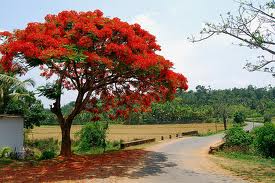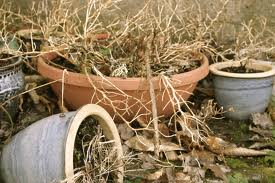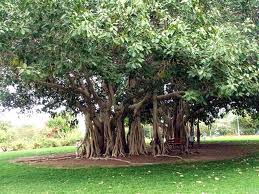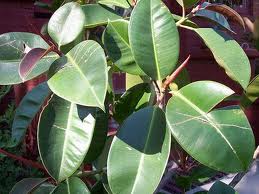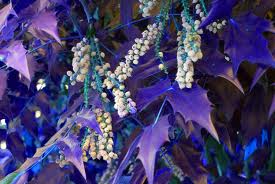VASTU SHASTRA
Vastu For Trees and Plants
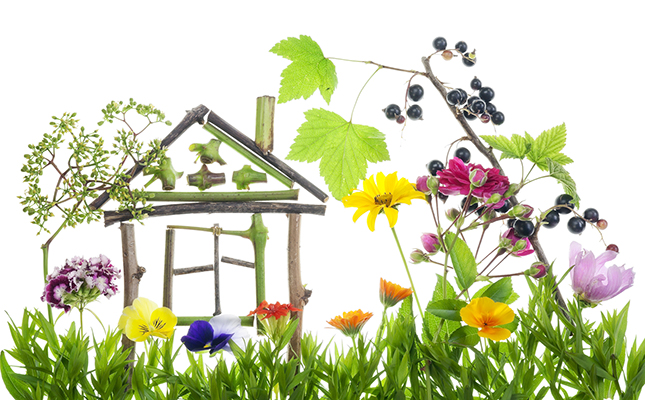
A plant not only provides a pleasant environment but also a relaxing view and hence they have a special position in Vastu shastra. Many shastra like "GARUD PURAN", ""RUP MANDAL" and many more states the importance of plants and tree in our life.
A healthy plant not only effects us physically but emotionally too. One should be careful while designing your garden, Vastu have some suggestions you can implement in your life to make it easy and prosperous.
Plants and Trees Locations and Importance
The Vastu provide the location of plants and trees as per their appearance and property. The given chart shows the location of plants and trees the house is bounded by the dark boundary and rest is outside area.
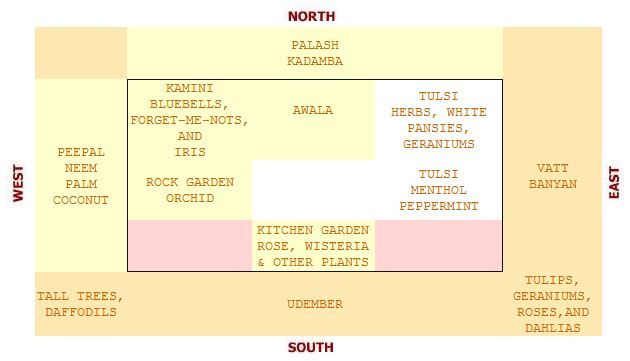
NOTATIONS
- Best for making garden
- Best for small plants
- Outside Area of house
- Not for normal garden
VASTU GUIDELINES FOR GARDEN TREES AND PLANTS
One enters the house compound through the Main Gate. Usually if space is available, people like to have a small garden in the front as well as at the back of the Site. Vastu Shastra lays down guidelines on all aspects of house designing, including the planting of auspicious trees and plants around the house. As Vastu is a science, there is logical, scientific explanation for every guideline. As an Vastu Specialist, I have attempted to explain these guidelines rationally and scientifically, so that you can decide what you want to follow or don't.
Some of the auspicious trees according to Vastu, that are good for the inmates are described below along with their usefulness:
PEEPAL TREE - It is also known as the Aswatha tree. Scientists have found that oxygen is produced in large amounts by the leaves of this tree and it is found in high concentration under the branches, probably due to the thick foliage. Hence it is considered very healthy to circumambulate this tree in the morning. It is prohibited from being cut. However, it is not suitable near a house, since it has far spreading roots which can affect the foundation of the building.
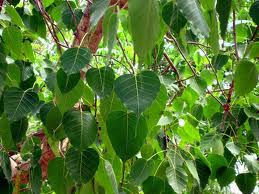
NEEM TREE - This tree has great medicinal value and it's extract is used in pesticides. Its twigs are used to brush teeth and neem oil is used in physiotherapy. Since neem leaves are very bitter, a mixture of neem leaves, tender green mango and jaggery is eaten on Ugadi or the New Year in South India, as a symbolic gesture, that one is prepared to face the sweet, sour and bitter experiences of the coming year with equanimity. Therefore, this is a good tree to have in a house garden.

MANGO TREE – Most parts of the mango tree have medicinal value. It's leaves are used as a pesticide, and its twigs are used for brushing teeth. Its leaves are used for puja purposes. It is considered very auspicious if the dead are cremated using ma ngo tree fire-wood. Then of course, mango fruit is the king among fruits and very tasty. The raw mangoes are used for making pickles and as a vegetable. Mango trees also have a very long life and can survive for 400-500 years. Obviously, this is also a very useful tree to have in your garden.

JACK-FRUIT TREE - Like the 'mango tree, the jack-fruit tree also produces very tasty, seasonal, fruit in large numbers. The yellow juicy kernels inside the jackfruit are used to make different types of sweets and halvas. The raw fruit kernels are cut into strips and made into tasty jackfruit chips, a speciality of Kerala. The Jack-fruit's seeds are also nutritious and are used like a vegetable in South India. The beautiful yellow coloured wood from this tree is used to make furniture, doors, windows etc. Its leaves are considered auspicious and are used for puja. Therefore, it is useful and can be planted in your garden.
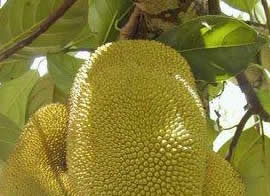
BANANA TREE – The tender saplings of the banana tree are used for decorating doors of houses, pandals etc, during functions and festivals as they are symbols of prosperity and wealth. Almost every part of the plant has some sort of economic or medicinal use. Banana fruit is the best source for instant energy and are rich in potassium. Raw bananas are cooked and eaten like a vegetable. The skin of the fruit is used in dyeing. A lot of illnesses can be treated with concoctions made from the roots, stem, flowers, and leaves of the tree. So this is a must-have in your garden.

COCONUT TREE - Every part of this tree is useful. The tender coconut water is a very healthy, cool, low fat drink. The coconut flesh is used in South Indian cooking in large amounts and gives it a distinctive flavour. The oil extracted from coconut is used in cooking as well as a hair oil. Coir is a very useful by-product which is used in making mats, carpets etc. The leaves of the coconut tree are weaved and used as roofing for huts by the poor. It's dry leaves are also used as fire-wood. Due to it's usefulness it is considered a sacred tree. Hence it is considered a must, in your garden.

SANDAL WOOD TREE- Sandal wood is very expensive as it is used to make exquisite handicrafts, and its oil is very fragrant. Sandalwood paste when applied on the forehead, cools the head. The sandalwood is used to make incence sticks. It is very rare to find sandalwood trees and hence there have been so many instances of robbers cutting down trees in the middle of the night, if found in any house compound. If you like this fragrant tree, it is a good idea to try and grow one - but you may need to secure it!
Smaller shrubs- may be planted on the East or North sides, but no trees should be planted in the North-East corner as they block the useful morning sun rays.
Tall trees- like Coconut can be planted in the South-West, West sides but should should not be too close to a building as they block the sunlight completely. A tree should be planted such that it's shadow should not fall on the house, at least between 9.A.M to 3P.M.
Large trees- like Peepal, Banyan should not be located too near the house as their roots can damage the foundation and compound wall. Also, the large trees absorb most of the sunlight, meaning these positive rays will not be received by the building.
Good trees- that can be planted in a house compound are useful trees like coconut, neem, betel, sandalwood, lemon, pineapple, bilva, almond, jackfruit, pomegranate, mango, amla, and katha.
Avoid flowering trees in gardens: Reason – They shed leaves during the summer.
Trees with insects, worms, honey bees, bumble bee, owls, serpents, should be avoided for obvious reasons.
If a tree must be removed because it is inauspicious or for other reasons, the day before cutting the tree, one should express regret to the tree, and it must be removed from its rooting. A new tree should be planted in its place within the next three months. This is a way of conserving nature.
ACCORDING TO VASTU SHASTRA, WHICH PLANTS ARE TO BE GROWN IN THE HOUSE GARDEN?
TULASI (BASIL) - It is also known as holy Basil and it is always good to grow a Tulasi plant on one's property. Tulasi should be located on the North, North-East, or East sides of the house, or in front of the house. Tulasi is used extensively in Ayurvedic medicines. It purifies the blood and improves the digestive system. It is believed to be useful in treating many types of diseases. Its probably for this reason, that it is considered a sacred plant and used in daily worship.
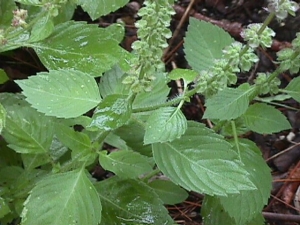
JASMINE - In general, plants with sweet smelling flowers like jasmine, red lotus, blue lotus etc. are good in the house compound as they give out a pleasant perfume, and can also be used in daily worship. Flowers like the Jasmine are stringed together and used as a decoration on the hair by Indian ladies. Moreover, as these flowers are produced round the year, they are always available.
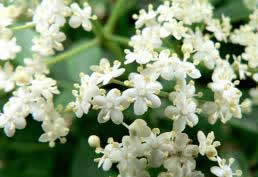
THORNY PLANTS - Thorny plants should not be planted near the house. Cactus should not be planted at all. Thorny plants other than roses have a negative energy. Ideally all thorny plants should be pulled up and destroyed. The reason could be that the thorns can hurt you when you brush past them.
CREEPERS – Creepers or other plants should not be grown using the building or compound wall as a support as their clingers will slowly creep into tiny cracks in the walls and gradually widen them as they grow, causing damage and seeepage of water through the walls. Creepers should only be grown in a garden, and they should have their own independent supports. A creeper like a money plant can be grown within the house but should not be grown outside, using a tree for support.
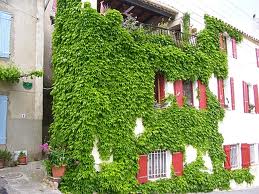
FLOWER POTS - Flower pots should not be kept on the compound wall in the North, East or North-East as they will block the useful morning sunlight coming in from these directions.
Flower pots and decorative plants can be placed on the ground in these directions, but they should not grow taller than 3 feet.
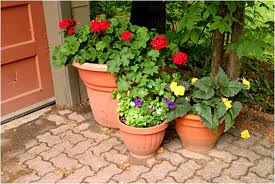
LAWNS AND WATER BODIES- Lawns should be in the East or the North. A small water-fall of three to four feet or a water body can be constructed in the East or the North leaving the North-East corner. If there is a swimming pool in the garden, it should be in the North or North-East direction, so that the people using the pool benefit from the sun rays and also, the water will get purified by the U.V rays of the Sunlight.

Reasons Regarding Plants VastuNeem and peepal tree will bring you good luck
|
Er. Rameshwar Prasad invites you to the Wonderful World of Vastu Shastra
Engineer Rameshwar Prasad(B.Tech., M.Tech., P.G.D.C.A., P.G.D.M.) Vaastu International
|


